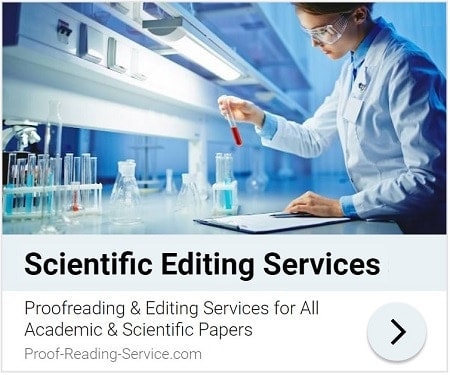
Table of Contents (Guide To Publication)
Part II: Preparing, Presenting and Polishing Your Work – Chapter 3
3.1 Titles, Headings and Subheadings: Not Just Fancy Words
Although journals differ in the amount of detail they provide about the kind of titles, headings and subheadings they want authors to use, most journals offer some instructions on how to format these elements, and since headings in general are probably the single most immediately visible aspect of your paper, following those instructions to the letter is vital. If a journal’s guidelines ask that the title contain no more than 80 characters, use capitals for the first letter of both the title and the subtitle and include no abbreviations, then your title should observe all of these requirements. If the guidelines indicate that the abstract should be divided into sections using particular headings in italic font with each followed by a colon also in italic font, then you should format your abstract in precisely this way. If the guidelines insist that all first-level headings should appear in 14-point bold font and sport capitals on every main word, all second-level headings should appear in 12-point italics with only the first letter uppercase, and all third-level headings should be in bold font and tucked into the beginning of paragraphs as a short sentence and followed by a full stop (also in bold), then your headings should use these formats consistently and accurately.
In many cases, the headings themselves, especially for the first level, will be specified in the journal guidelines as well: Background, Methodology, Results, Discussion and Conclusions, for instance. If this is the case with the journal to which you’re submitting your paper, you should do your very best to use these headings. If absolutely necessary, you can add a colon and brief subtitle to designated headings – Background: Previous Trials and Literature, for example, or Methodology: Participants and Questionnaires – but these extra words can instead become subheadings or second-level headings, with Participants and Questionnaires, for instance, as subsections within the main Methodology section of your paper. The latter would be the safer route in most cases, and since very few journals require particular wording for headings beneath first-level headings, there will generally be more flexibility in choosing your second-level and subsequent headings.
It will come as a great relief to some authors that many journals do not give such detailed instructions about the format or wording of headings – many, for example, will simply limit authors to using three levels of heading beyond the title. This means that you have the opportunity to devise a creative heading for each section that accurately reflects the content of the section it introduces, and to format the three levels of headings as you wish, but it doesn’t mean that the headings can be laid out or formatted in a careless or inconsistent manner. If, for instance, you simply type all your headings in using the exact same font and format, then your reader (including that all-important editor at the journal) will not be able to distinguish a second-level heading from a first-level or third-level one. So the freedom to format your headings as you like is an opportunity to flaunt your creative formatting skills: use bold font for the first level, italics for the second and regular font for the third, or perhaps larger bold font for the first level, a smaller font in bold for the second and the smaller font in italics for the third. The possibilities are virtually endless, but be sure that the system you design works effectively to distinguish all the sections of your paper, and once you’ve decided on the format and levels you’ll be using, be consistent and stick to your system.
Authors are generally so steeped in their own work that it’s difficult to be fully aware of the confusion that can result when headings are used in inconsistent ways. Certainly headings are fancy words and make your paper more visually attractive, but they are also essential to the clarity of your argument and all the information contained within it. If, for instance, in the second of the examples I’ve provided in the preceding paragraph – first level: large bold, second level: small bold and third level: small italics – the reader comes across two headings in a row in small bold font without any text between them, what is he or she to make of the structure of the paper? Are the two headings equivalent and, if so, is there text missing between them? Should the anomaly be read in some other way or has the author simply neglected to format these headings appropriately? A different kind of confusion arises if the reader comes across a heading in large italics or regular font, neither of which fit into the system the author has established with the first few headings. Is a fourth level of heading intended or is the format simply an error for one of the three levels already used? Such inconsistencies not only introduce glaring errors of the kind that editors are seeking, they force the reader to conjecture about the structure of the paper and can also be misleading and even promote misinterpretation of the work you’re submitting.
So be creative with your headings while you’re following journal guidelines, work to lay your paper out in an attractive way that clarifies the progress or stages of your argument, and don’t be afraid to use space as well as different fonts to distinguish heading levels. A large heading in bold font seems to demand a somewhat larger space above it than does a small heading in italics, and such effective spacing can render the structure of your paper even more successful for your readers. As an art historian friend of mine once said when looking over my CV for me, “try to leave a little more space on the page.” She saw that space as a vital component of the document – one that rendered it more attractive and user friendly – and if a journal’s guidelines indicate any spacing requirements, they are equally vital. When a journal asks you to use double line spacing, for instance, which tends to be the most common spacing requested, it’s because those who will be working with your text find this format the most efficient, so there’s no reason not to comply, and spacing above and below headings can be adjusted for an effective layout no matter what basic line spacing you’re using.
Some journals will ask you to number your sections and subsections, while others will very specifically ask you not to do so. If the guidelines you’re working with do call for numbered sections, they will almost certainly require the numbering of subsections as well, with the most standard format as follows: 1. Methodology (first level), 1.1 Participants and 1.2 Questionnaires (second level), and 1.2.1 The First Questionnaire and 1.2.2 The Second Questionnaire (third level). Be sure to use after the numbers the punctuation required by the journal – occasionally, for instance, a colon instead of a full stop will be wanted – and beware of automatically numbering your sections in a programme such as Microsoft Word (for more on automatic formatting, see Section 5.3). This function can produce a tidy layout, of course, but it can also introduce errors based on the way in which you type material into your document by deciding that one of your numbered headings should not be included in what it sees as a numbered list. This will result in misnumbering, and the problem can be magnified if you have several levels of subheadings, bringing disorder to your efforts to achieve careful organisation. So it’s always best to number your sections manually and maintain control over your paper’s structure. It’s also best to use the numbers of sections where referring to them within your paper, and if your sections aren’t numbered, to make any cross references as specific as possible, using the exact wording of headings whenever you can.
Finally, a few journals will even set specific word limits for each section of a paper, or suggest that each section should be a single paragraph. This requirement is more difficult to comply with, but it, too, must be taken seriously, so if you find that you simply have too much information to fit into the word limits for a single section, you may need to engage in a little creative division and devise additional headings to find a compromise between the journal guidelines and the nature of your research and paper.
PRS Tip: One of the best ways to improve your use headings of all kinds in the scholarly papers you write is to pay careful attention to how headings are used in the many books and papers you read. This will be especially helpful in the case of papers published by the journal to which you’re hoping to submit your own paper, of course, but it’s also good to be aware of how headings are laid out to deal with the challenges presented by the contents of any text. To enable topics to be located in this Guide, for instance, there are four levels of heading under the title, with each level numbered differently for precise cross-referencing (and spaced a little differently on the page as well): part headings in bold 14-point font (I), chapter titles in bold 12-point font (1), chapter sections in bold and italic 12-point font (1.1) and chapter subsections in italic 12-
This article is part of a book called Guide to Academic and Scientific Publication: How To Get Your Writing Published in Scholarly Journals. It provides practical advice on planning, preparing and submitting articles for publication in scholarly journals.
Whether you are looking for information on designing an academic or scientific article, constructing a scholarly argument, targeting the right journal, following journal guidelines with precision, providing accurate and complete references, writing correct and elegant scholarly English, communicating with journal editors or revising your paper in light of that communication, you will find guidance, tips and examples in this manual.
This book is focusing on sound scholarly principles and practices as well as the expectations and requirements of academic and scientific journals, this guide is suitable for use in a wide variety of disciplines, including Economics, Engineering, the Humanities, Law, Management, Mathematics, Medicine and the Social, Physical and Biological Sciences .
Table of Contents (Guide To Publication)
You might be interested in Services offered by Proof-Reading-Service.com
Journal Editing
Journal article editing services
PhD Thesis Editing
PhD thesis editing services
Expert Editing
Expert editing for all papers
Medical Editing
Medical Editing Services
Research Editing
Research paper editing services
Book Editing
Professional book editing services






